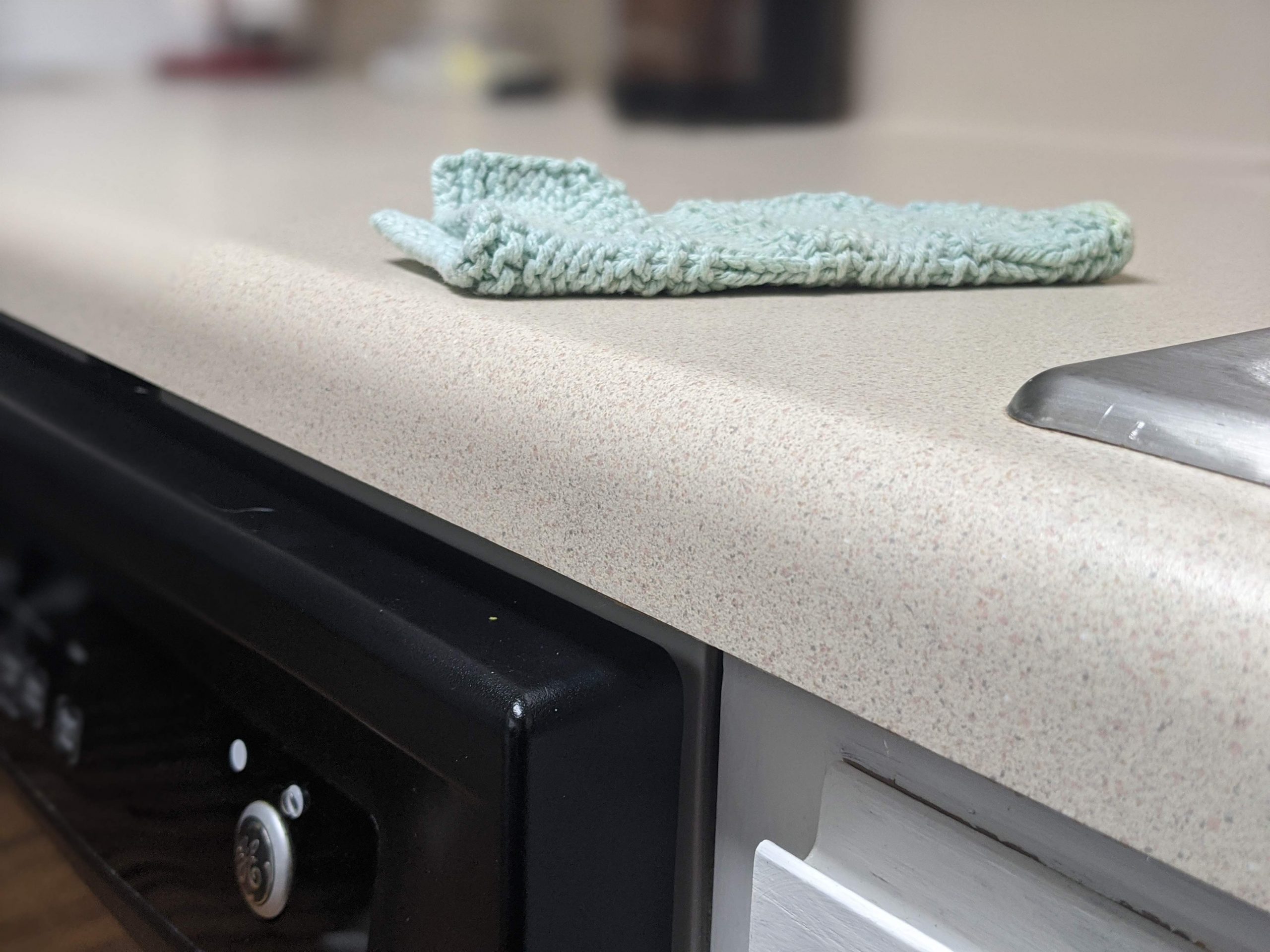Countertops are some of the most used surfaces in a home, but laminate countertops require a different degree of care when cleaning. Even a careful homeowner is unlikely to keep their countertops in pristine condition. Stains come from a variety of sources.
Beverages such as Kool-Aid and wine can create almost instant stains no matter how quickly they moisture is wiped away. Berries, a splash of tomato sauce, even a book that somehow gets damp can create lasting stains. Fortunately, there are ways to eliminate the stain without damaging the countertop. There are also products too dangerous for laminate and ways to prevent stains all together.
How to Remove Stains from Laminate Countertops
There are a few things that you can do to remove a stain from laminate countertops:
- Apply household cleaners such as 409 or Fantastic to the stain and wipe away with a sponge or soft cloth.
- Make a paste with baking soda and water. This is an effective way to remove a tough stain. Remember to wipe the solution away with a sponge or soft cloth and do not scrub.
- A diluted bleach solution may also do the trick in removing a stain. It is best to apply in an inconspicuous place first as bleach may discolor some types of laminate.
- Solvents such as paint thinners, nail polish remover, and denatured alcohol can also be effective in removing stains. This is another remedy that should be tested in an inconspicuous area before treating the stain.
What Not to Use on Laminate Countertops
There are certain cleaning supplies that should not be used on laminated countertops.
- Abrasive scouring powders. Scouring powders are tempting since the abrasive properties will most assuredly get rid of the stain. However, the damage to the countertop is not worth the quick effort.
- Scouring pads. Scouring pads can easily scratch and are best left for pots and pans with stuck on food.
- Steel wool. Plain steel wool and the pads that are coated with soap, can cause fine scratches which will completely ruin the countertop.
- Sandpaper. Using sandpaper will result in irreputable damage to the countertop.
- Exterior glass cleaner and full-strength bleach. Cleaners such as bleach or those meant for commercial windows can result in discoloration of the countertop.
- Magic erasers should be used with caution. Too much rubbing can mar the finish of the laminate. Light pressure should be used and an inconspicuous area tested first.
It is important to use the appropriate cleaners to protect the surface of a laminate countertop. Failing to do so can scratch the finish or cause it to appear dull and/or discolored. Once the surface is compromised future stains are more likely.
Preventative Measures
A little care can help in the prevention of stains on laminate countertops.
- Working over a sink when pouring liquids that stain, will wash those potential stains down the drain.
- Using cutting boards when slicing foods such as strawberries, will not only save the countertop from staining, but scratches from knife marks as well.
- Investing in a butcher’s block will provide a place for cutting foods that stain.
- There are many products from cutting boards to placemats that can protect the countertop.
Conclusion for Laminate Countertops
Stains are inevitable for most well used kitchens. Knowing how to eliminate stains on the countertops will keep the kitchen looking clean. There are certain products that should not be used due to potential danger to the countertops. Preventative measures could eliminate any need to remove stains.

Leave a Reply